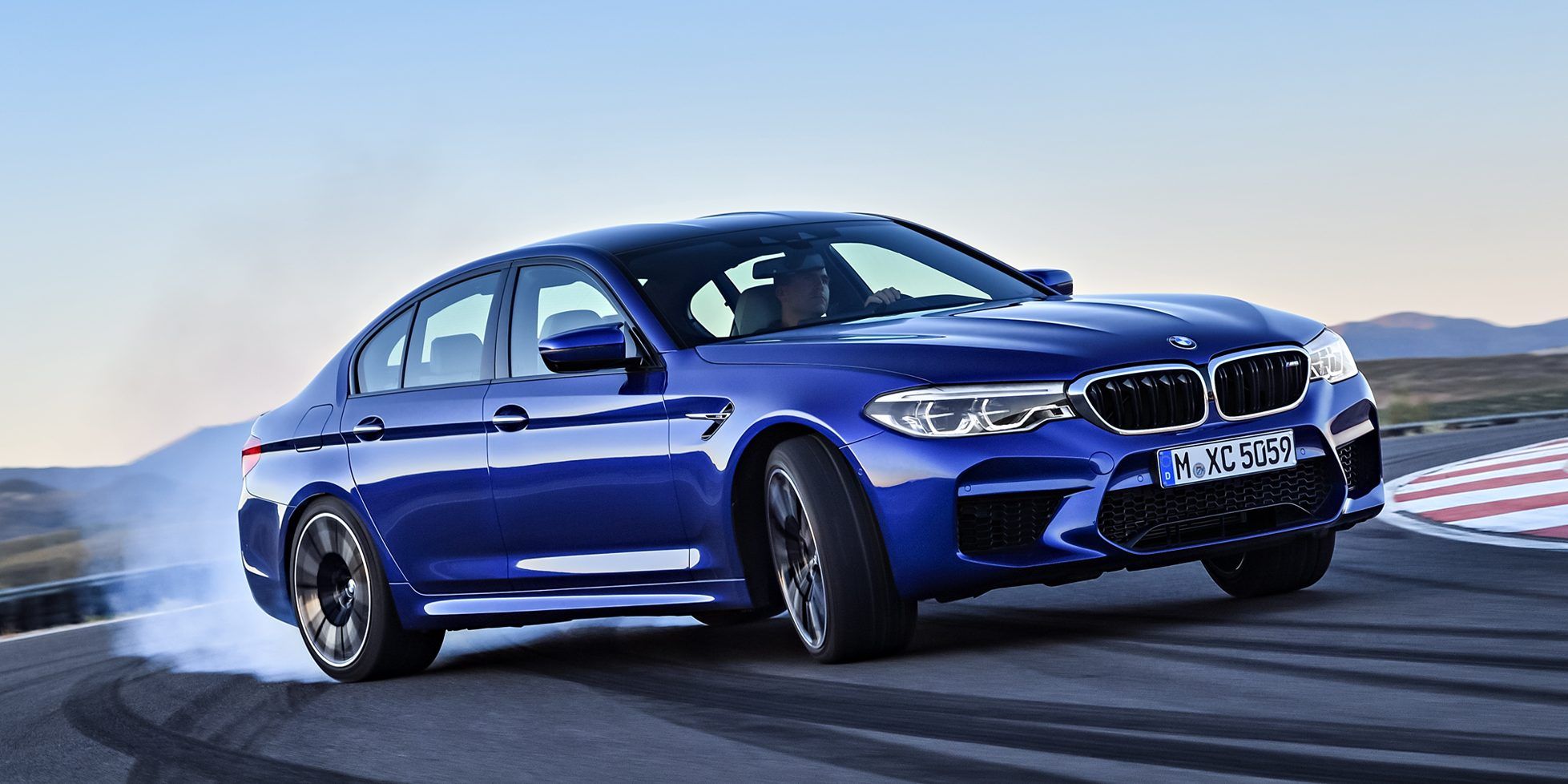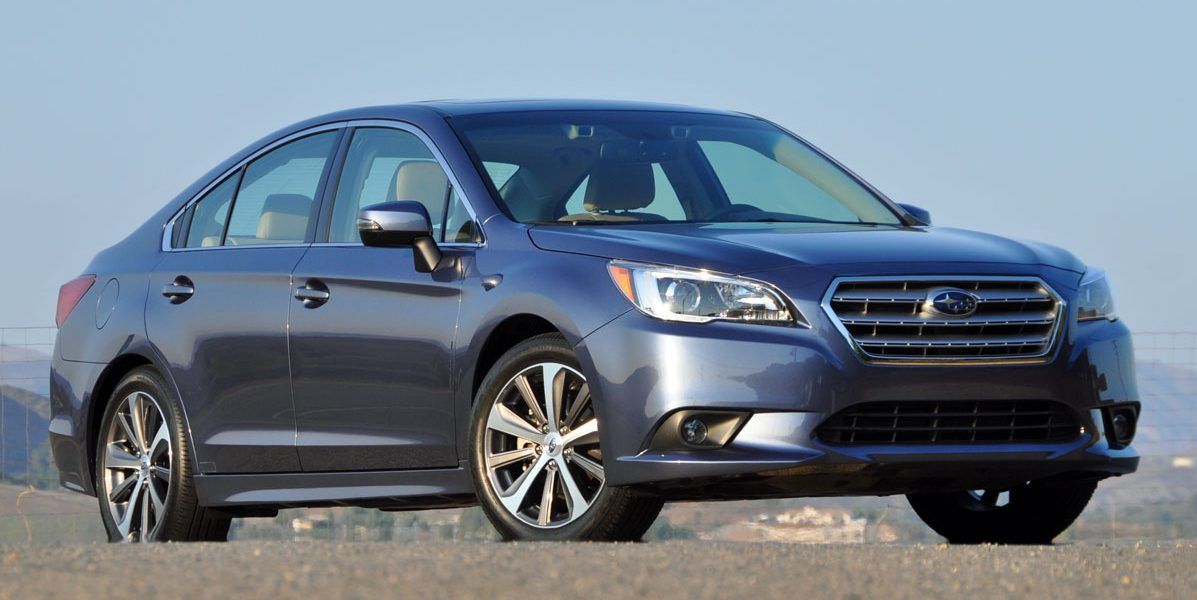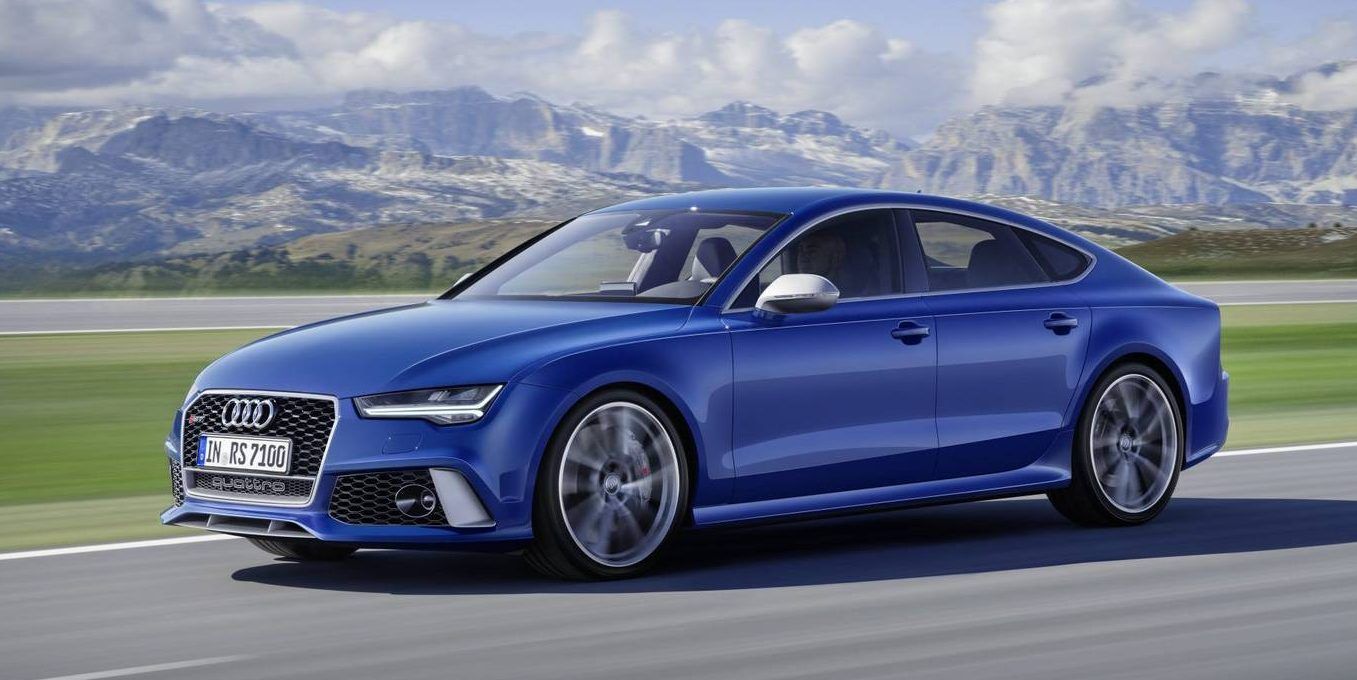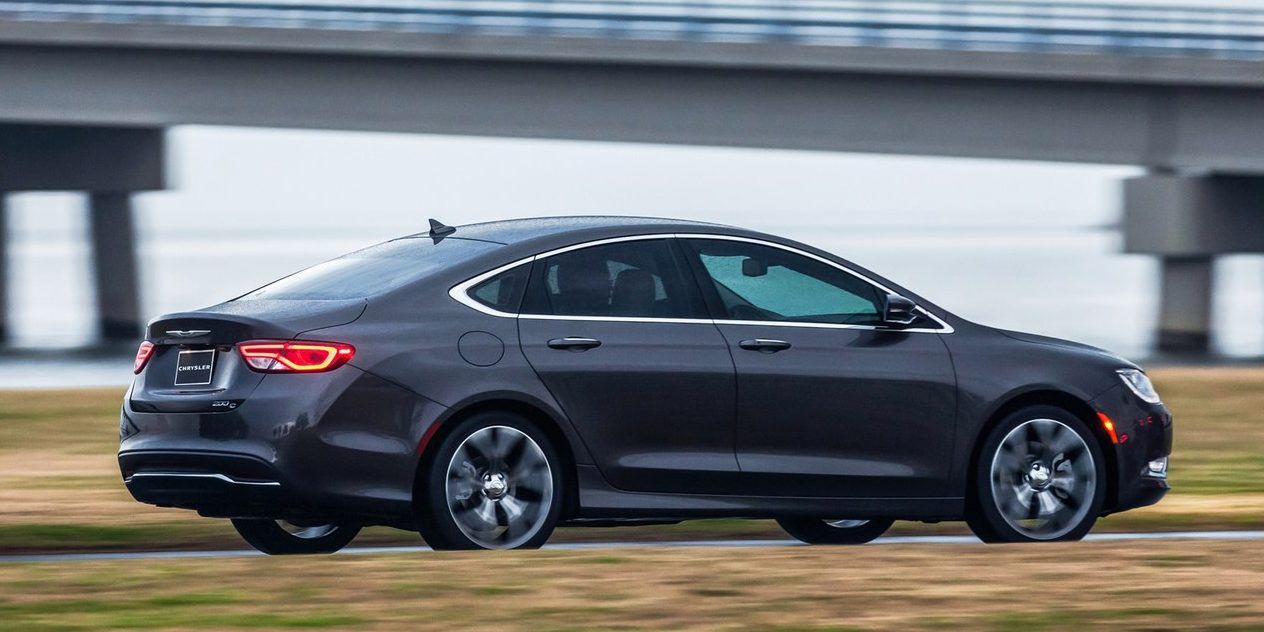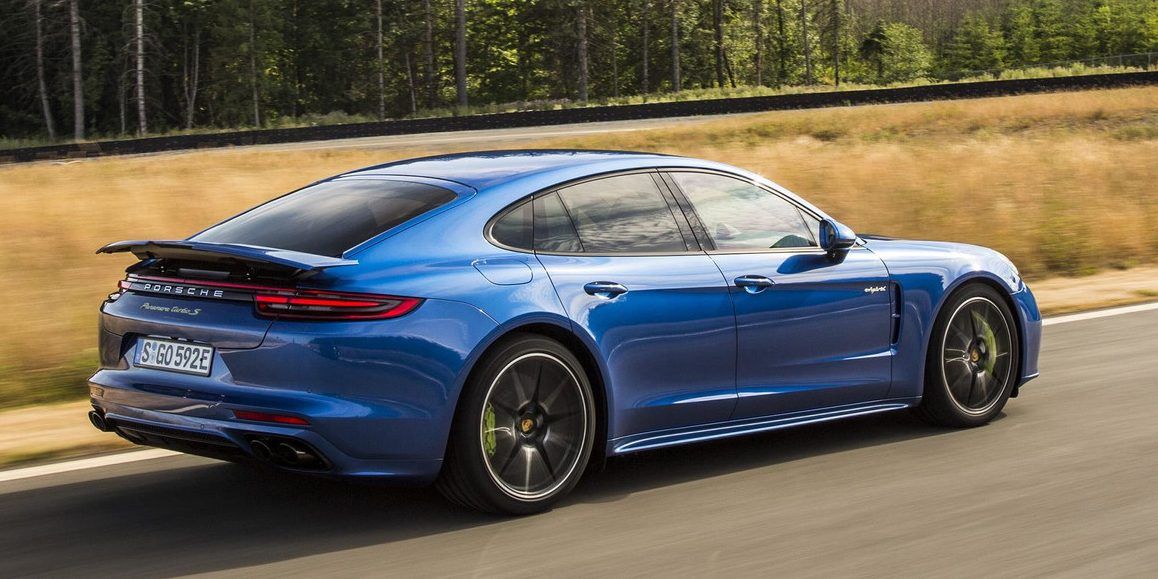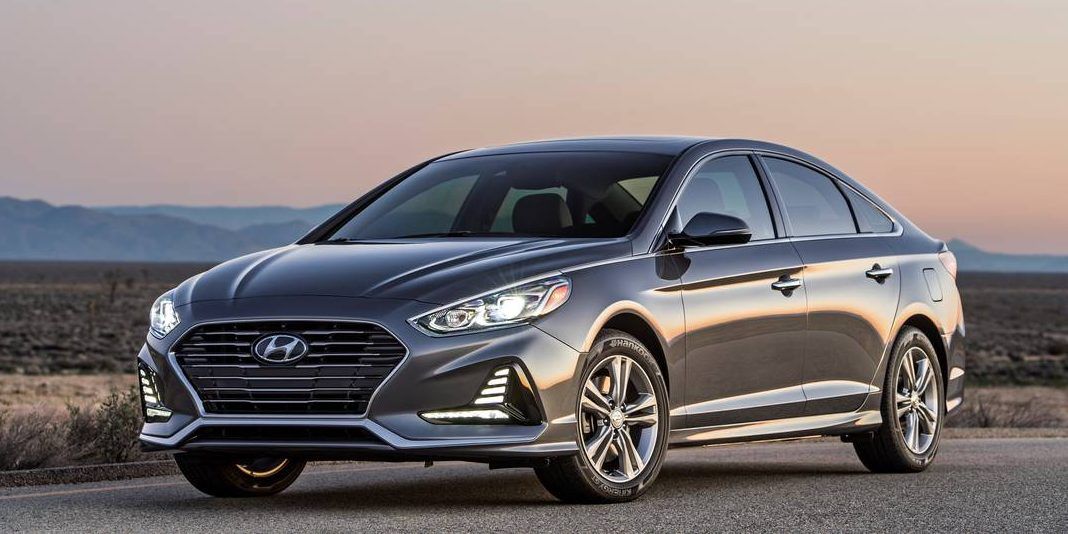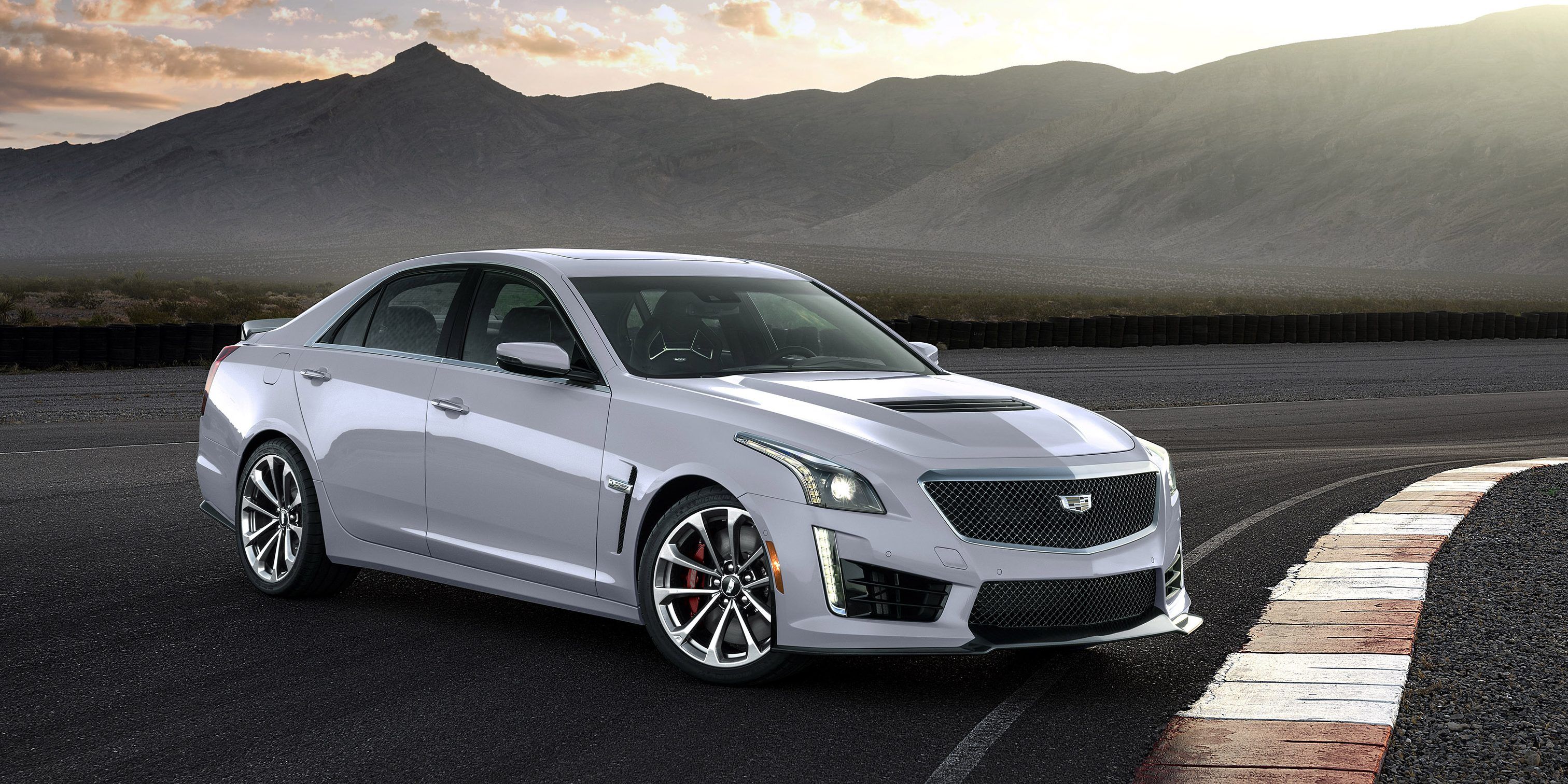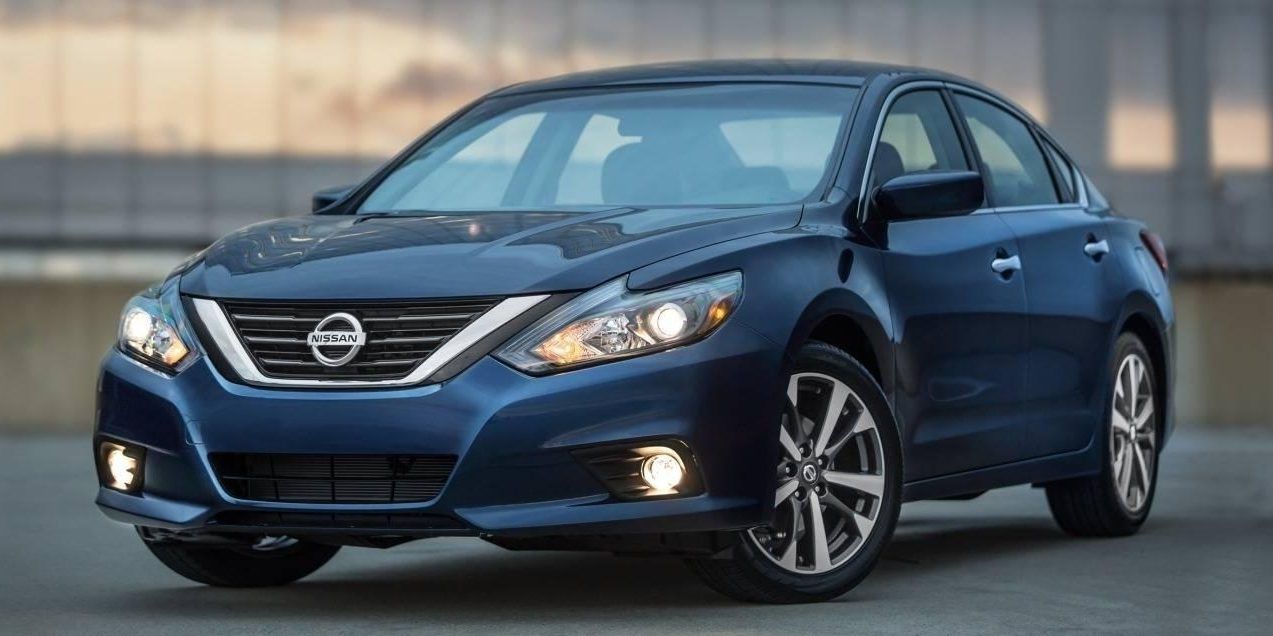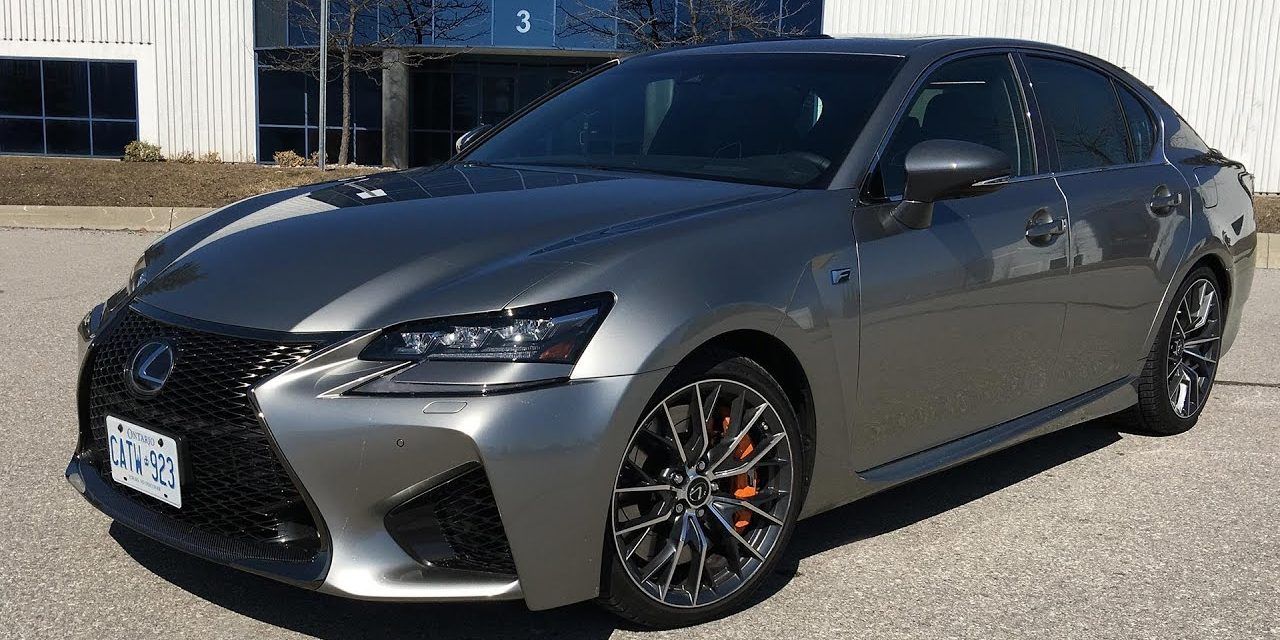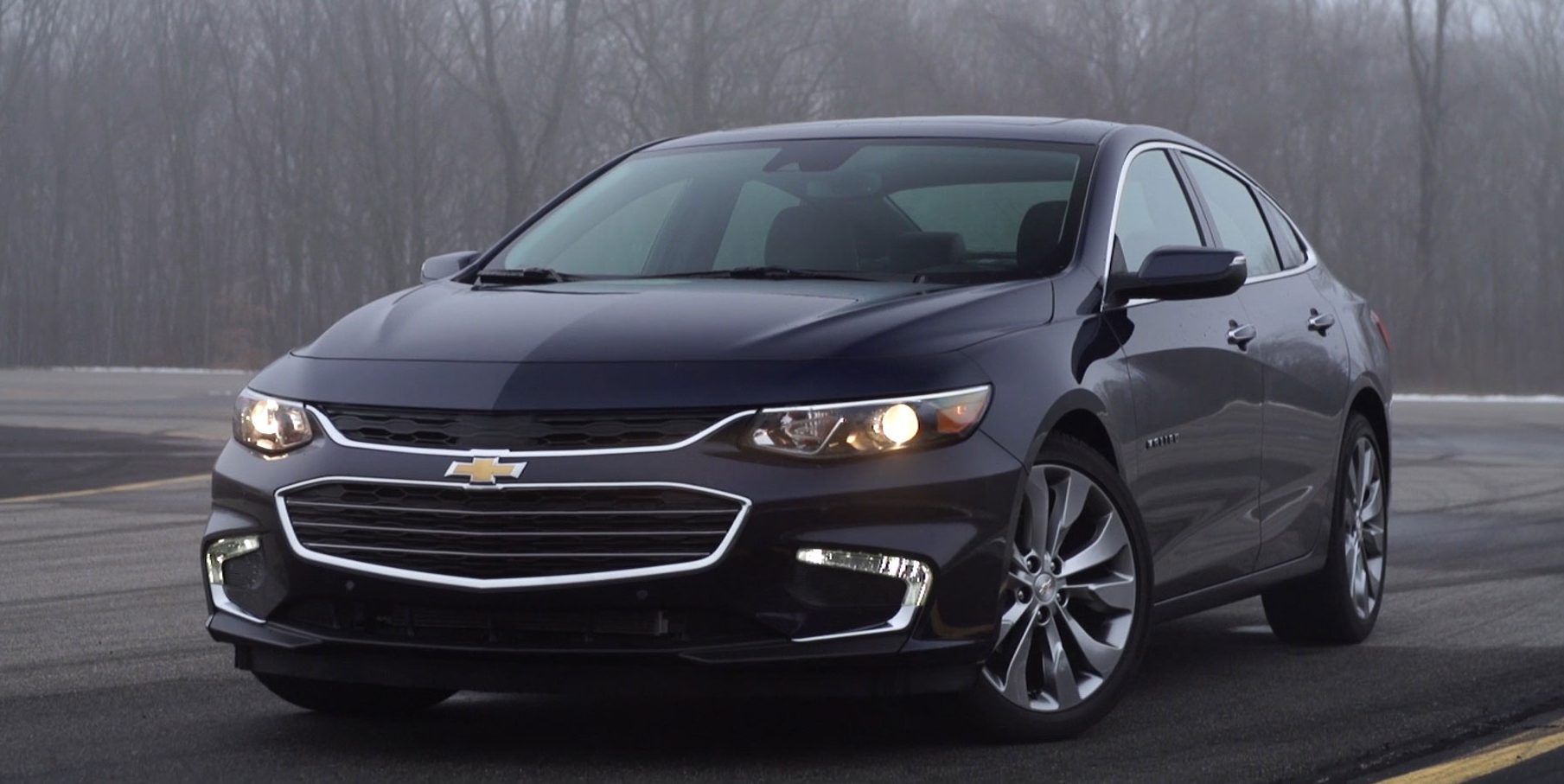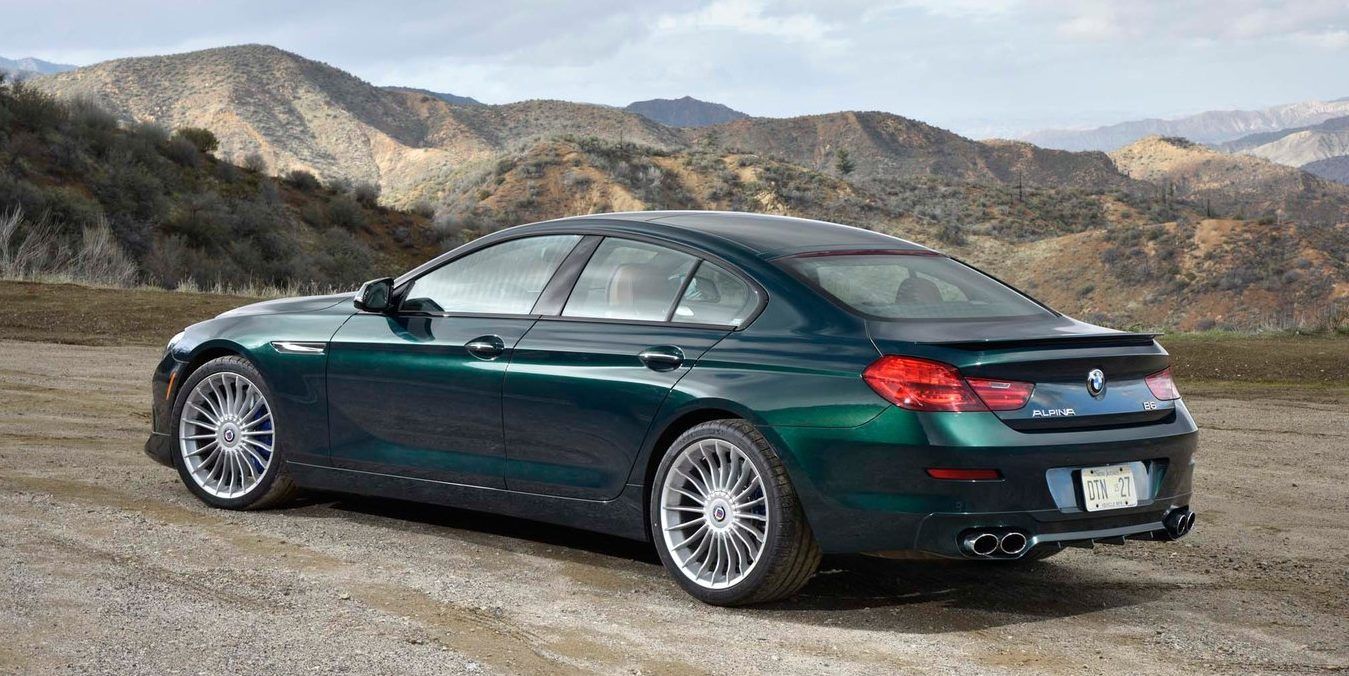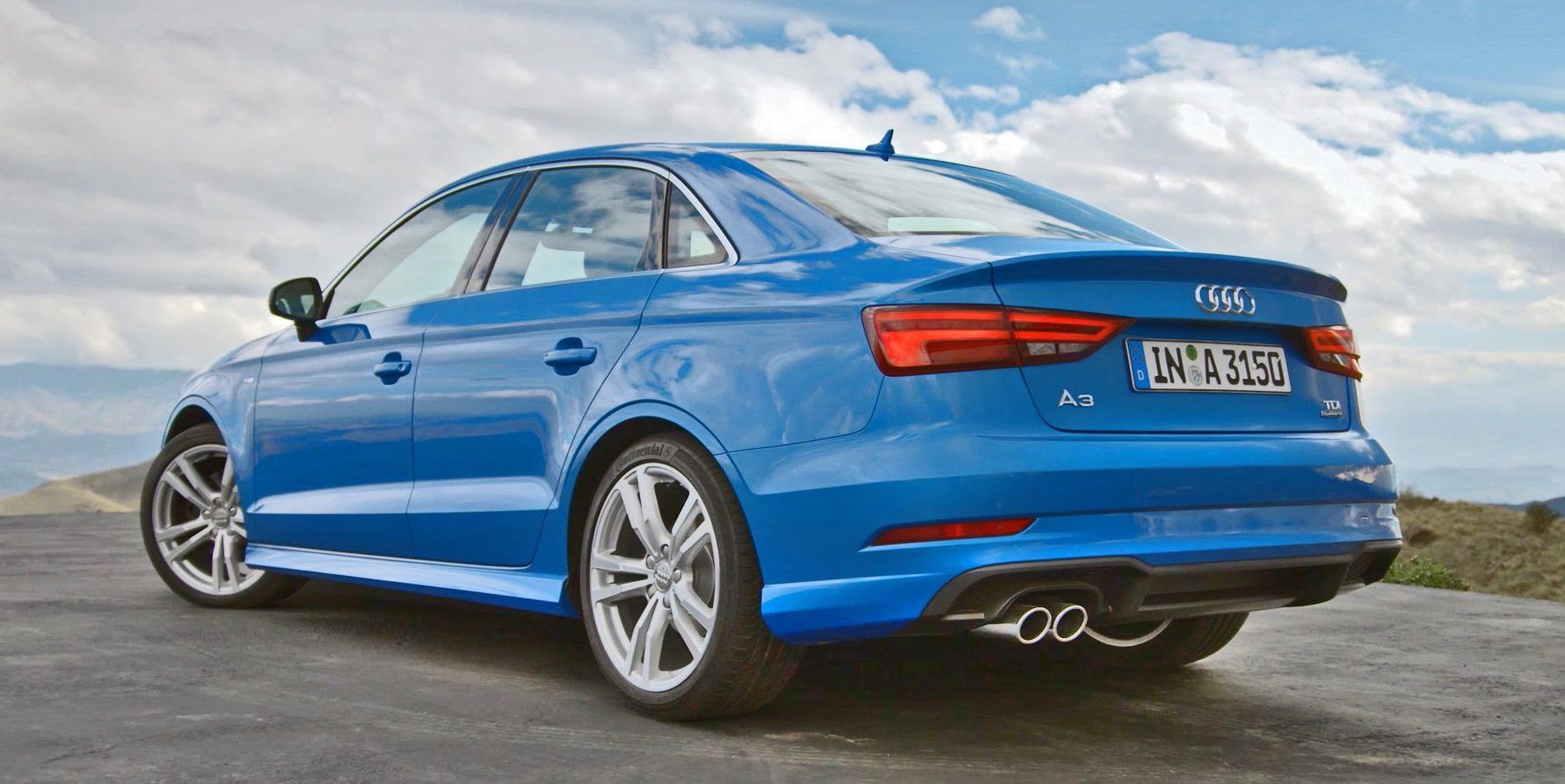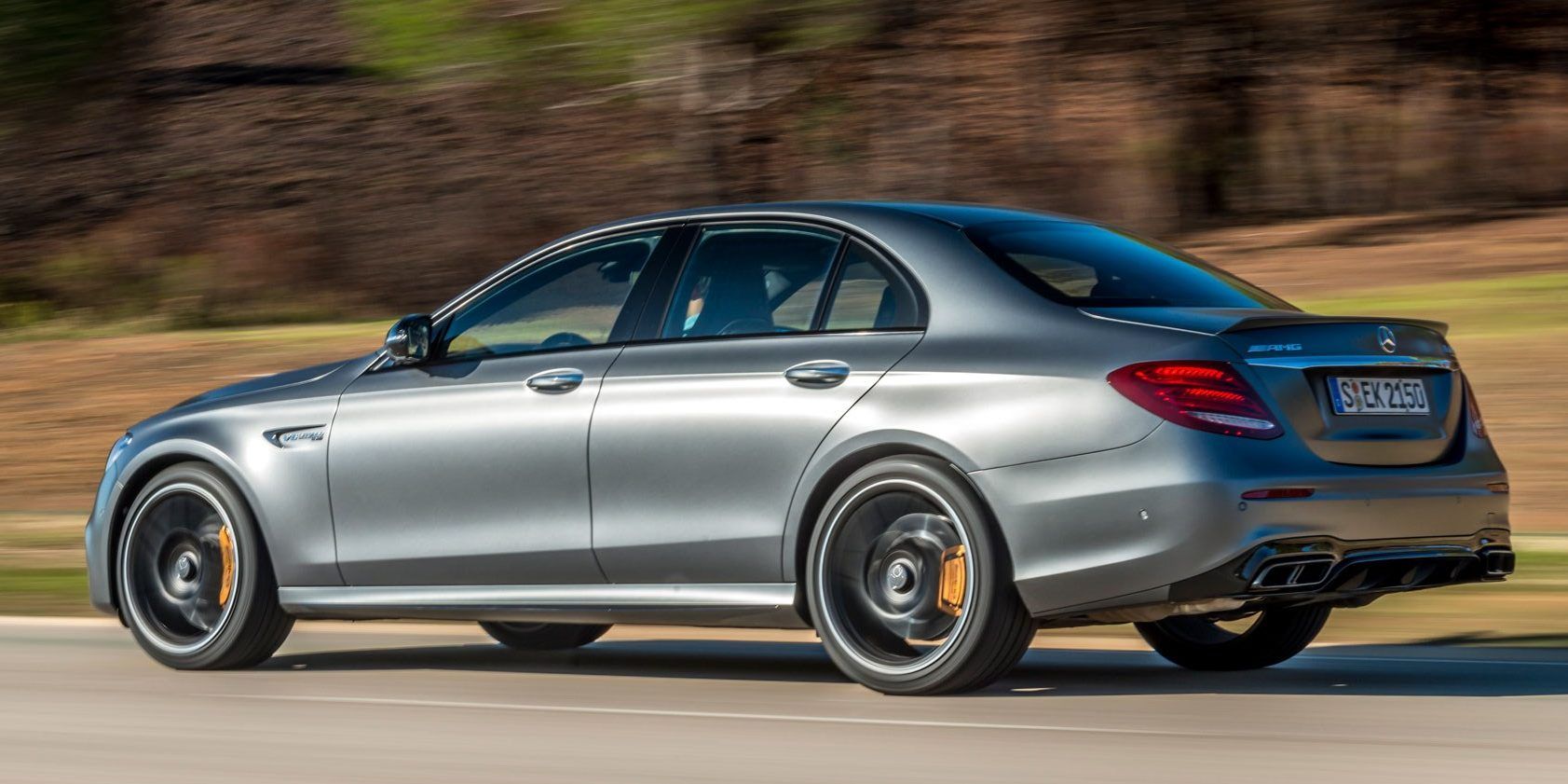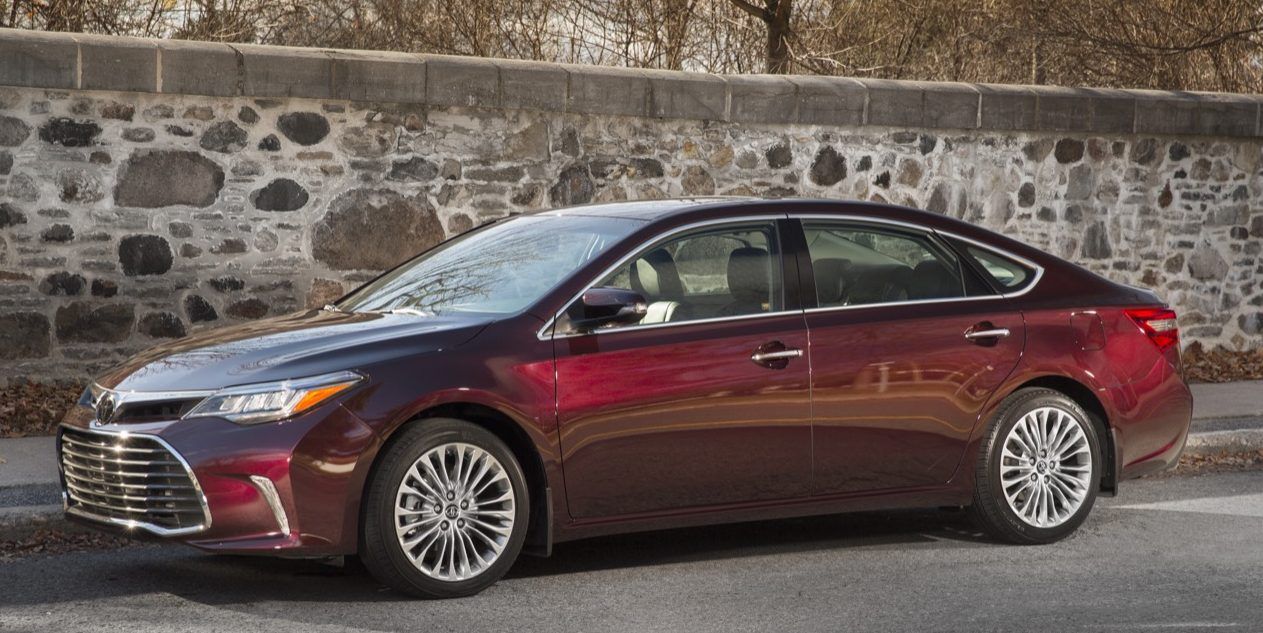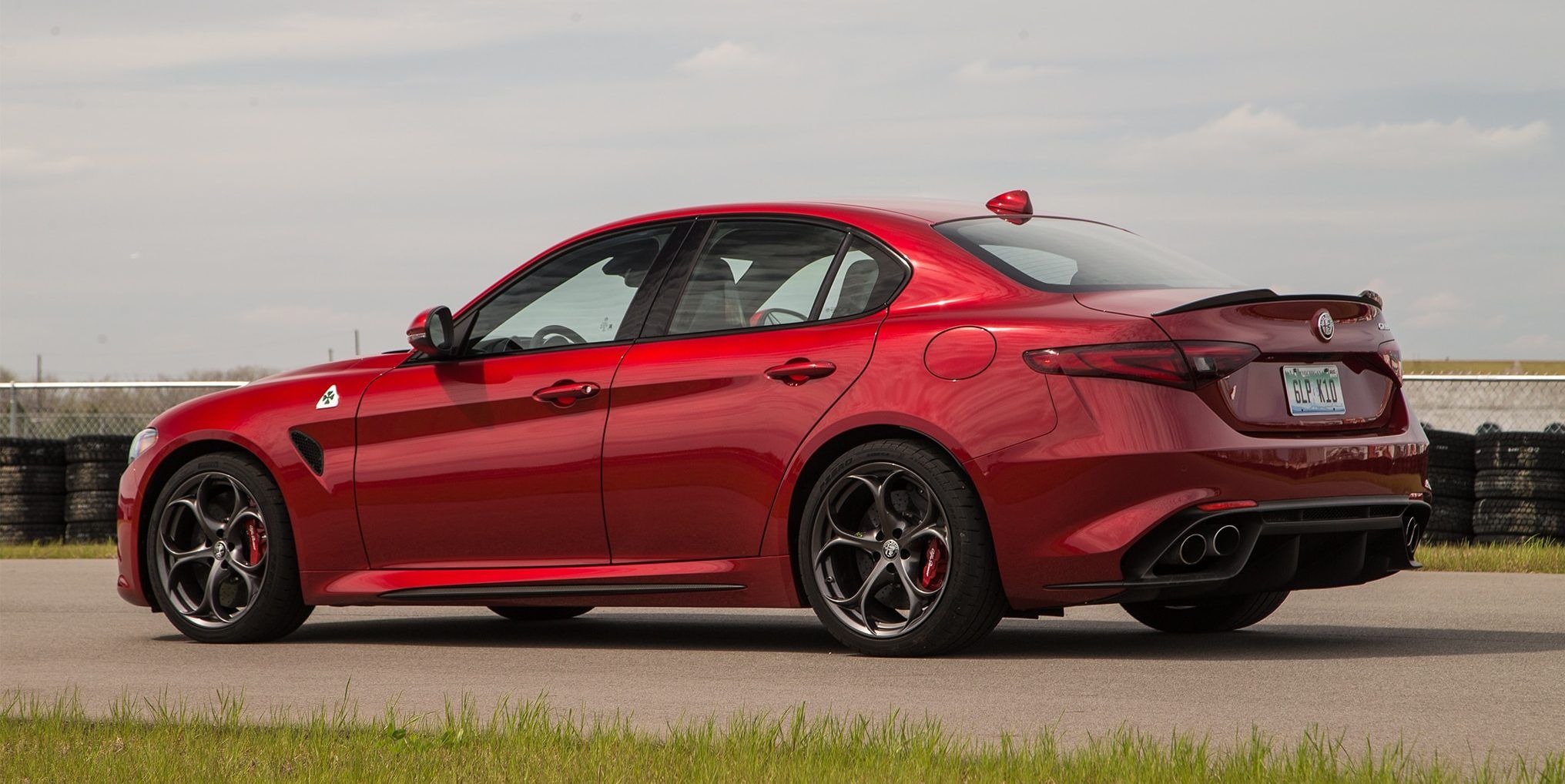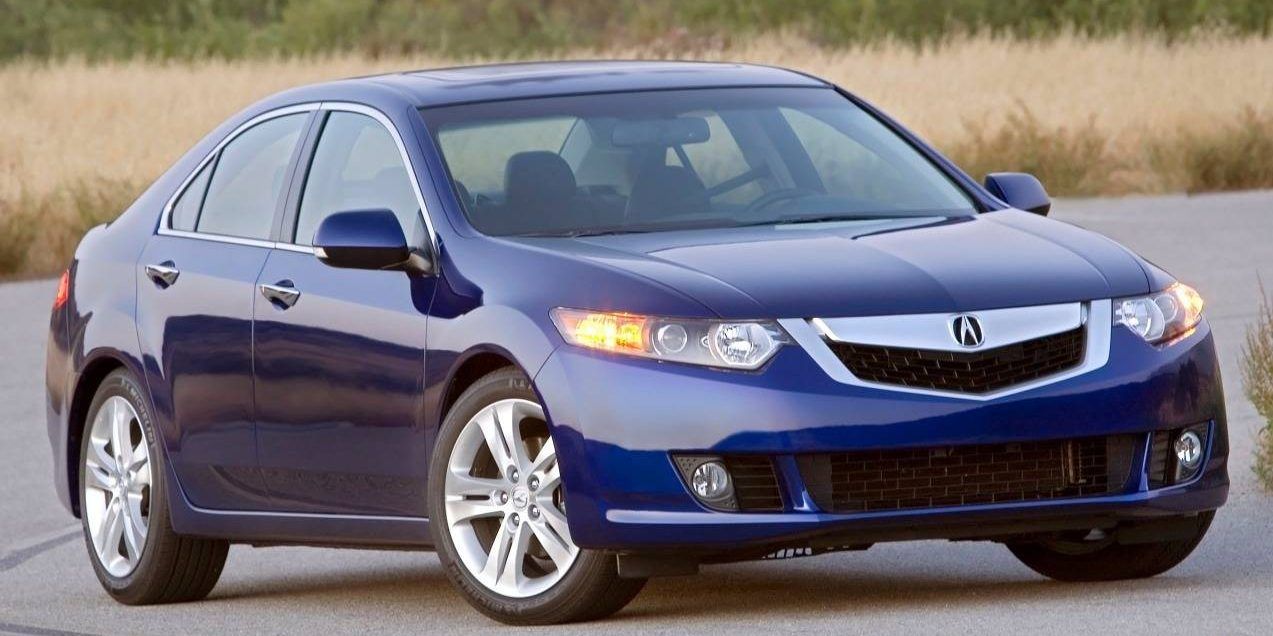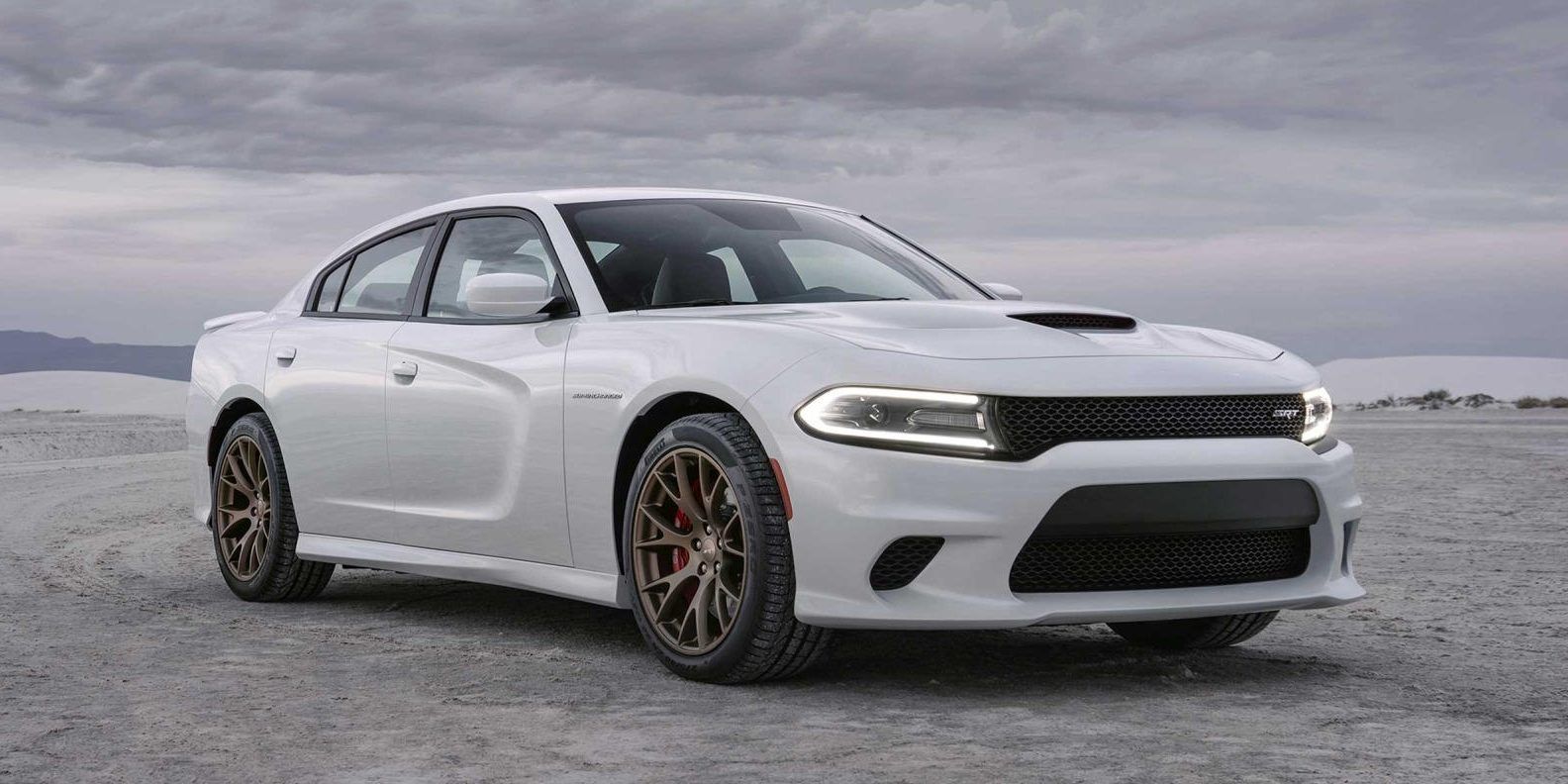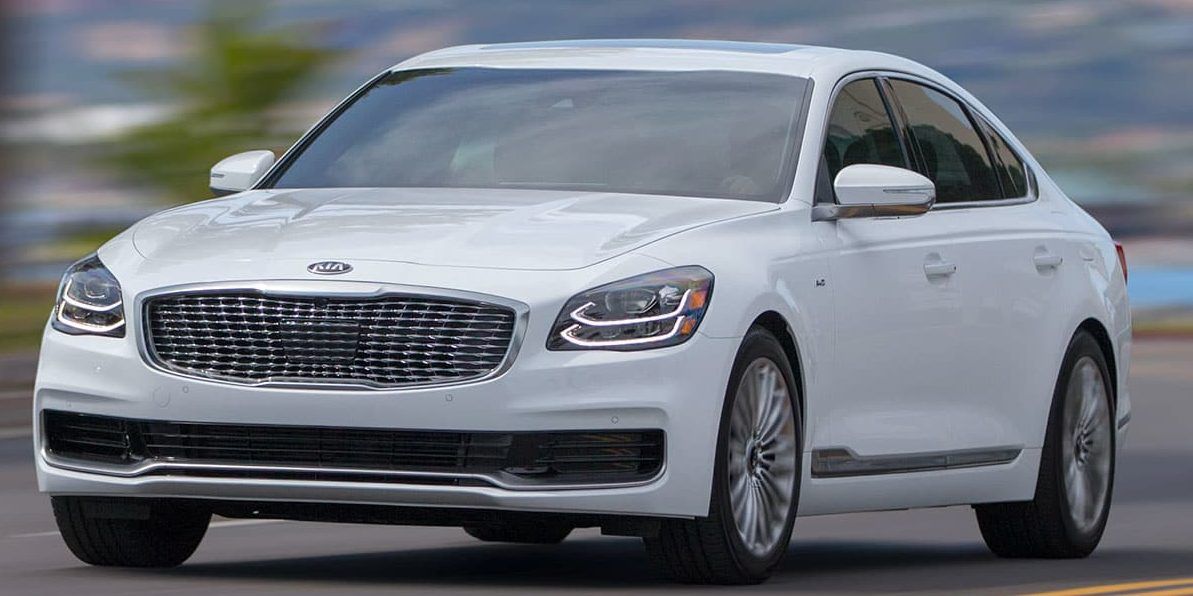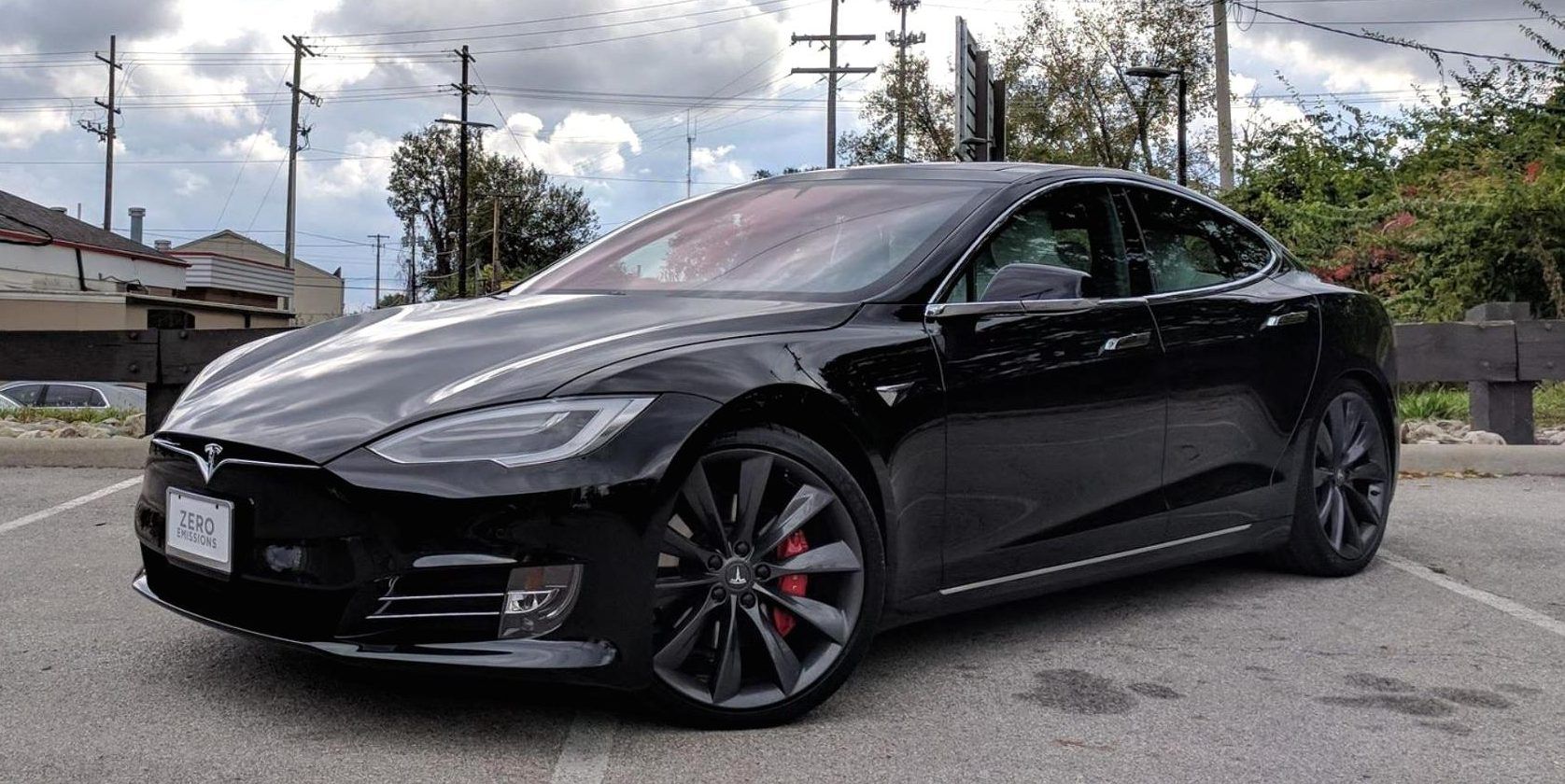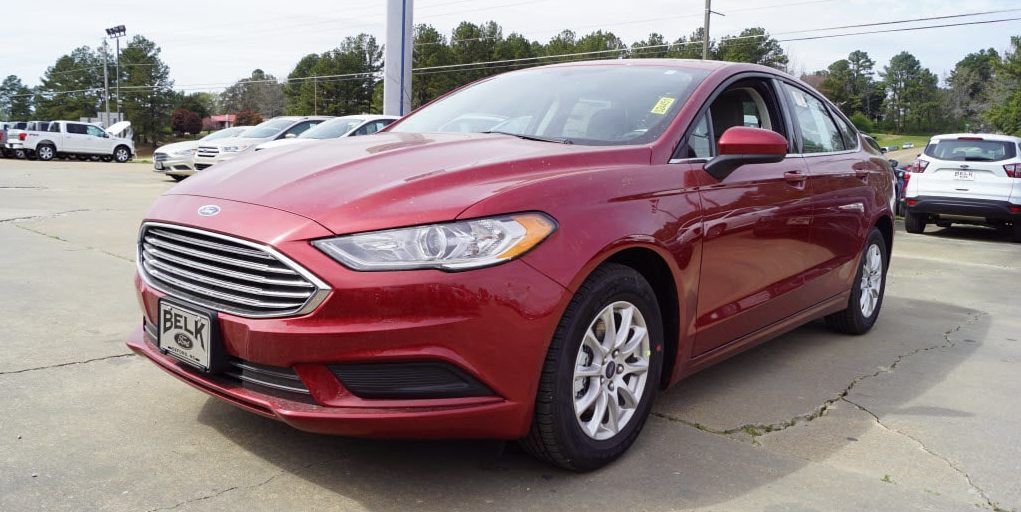Automobile design is a constant tradeoff between power, weight, handling, comfort, and cost. Sure, a Ferrari will have a gigantic engine paired to a lightweight body and will handle like a dream in the canyons or on the track, but for many people the interior will be cramped and small, while for almost everybody the price tag will seem astronomical.
Updated March 2022: If you're looking to purchase a fast sedan, or just want to avoid a slow one, you'll be happy to know that we've updated this list with even more information about the various cars.
From the very first cars, which replaced horse-drawn carriages as the best means of moving people and goods, size has been an important characteristic. For many drivers, being able to stretch out the legs, fit three children in the backseat, a dog in the front, and plenty of gear in the trunk is as much a consideration as how much power the car can create. As long as it can reach highway speeds, most sedans are just fine for the average consumer. But there are some discerning drivers who require a full-sized sedan that allow for the comfort and luxury that only a large frame can offer, while also demanding enormous power and superior handling so that driving their car can actually be fun. And while the pinnacle of automotive engineering is almost always decidedly in the realm of sports coupe, today many brands are producing luxury tourers who boast the impressive technology to compete with the world's best and fastest supercars. Keep scrolling for the 10 fastest production sedans on the market, and 10 sedans that can't even hope to keep up.
20 Is Fast: BMW M5
The M5 sedan goes almost all the way back through the entirety of BMW's long heritage of M-badged cars. The E28 M5 debuted in 1986 as a hand-built luxury sedan that crammed a high output engine from the original M1 under its hood, making 286 horsepower (or 252 for the emissions restrictions of the American market). At the time, it was the fastest production sedan in the world, and with only 2,241 E28 M5 examples ever produced, today it remains one of the most sought after of all of BMW's legendary products.
A lot has changed since those first E28 M5 sedans. The E34 M5 added power and creature comforts. The E39 M5 debuted in 1998 with a 394 horsepower V8 in the engine bay. 2018's newly upgraded F90 M5 adds all wheel drive to the picture, gets rid of the slower-shifting manual transmission option, and ups power output to 600 horses and 553 lb-ft of torque - at only 1,800 RPM. With luxury abounding in the form of comfortable seats and adaptive suspension, all that power still led Road and Track to describe the new M5 as "...an always-on sledgehammer" that can sprint to 60 miles per hour in only 2.8 seconds.
19 Eats Dust: Subaru Legacy
Subaru's latest Legacy model proves to be quite disappointing when considering the rally-bred heritage of the Japanese manufacturer, and even the history of its Legacy line. Way back before the Impreza, WRX, and STI transformed the company into both a sales and competition success, Subaru raced the all-wheel drive Legacy in races all over the planet. With distinctive 555 styling, a turbocharged engine, and the stability of Subaru's all-wheel drive, the Legacy paved the way for the STI's future dominance. In the mid-2000s, Subaru continued on that theme with the Legacy GT, available in station wagon form sharing the STI's turbocharged engine paired to a manual transmission, as well as a sedan in awesome Spec B trim.
Today's Legacy, on the other hand, comes with no turbo on either its flat four or flat six engine options, and a continuously variable transmission (CVT) in place of a good old-fashioned stick shift. Performance, especially for the four cylinder Legacy, is abysmal, as 176 horses try to pull over 3,500 pounds to 60 miles an hour in more than 8.5 seconds. Sure, the tradeoff is impressive fuel economy for a car with all-wheel drive, but given the Legacy's history, at the very least a turbo variant should be available.
18 Is Fast: Audi RS7
Many of today's highest end luxury sedans can trace their heritage back to the performance and power made possible by Audi's early and widespread adoption of their legendary Quattro all wheel drive. With rally championship roots, Quattro allowed Audi to one-up their competition when it came to cramming huge torque monsters into their big sedans, while the confidence inspired by such impressive traction allowed even amateur drivers to seem keep the cars under control.
Nowhere is the application of Quattro more apropos than in their modern RS7 Sportback, which features a wide range of technological features to help keep it in conversation with the best sports sedans the world has to offer. The RS7 offers adaptive suspension damping, option carbon fiber brake rotors, a cylinder on demand engine management system, all wheel steering, and of course all wheel drive (with Audi's quickest locking production center differential). But all of the tech in the world only serves to highlight the 4.0-liter, twin-scroll turbocharged V8 that cranks out 605 horsepower in Performance trim, as well as 553 lb-ft of torque at 2,500 RPM, with 516 lb-ft available down at only 1,750 RPM. With a distinctively Bauhaus exterior and arguably the automotive world's simplest but most attractive interior, the RS7 delivers on all fronts.
17 Eats Dust: Chrysler 200
Chrysler intended their 200 model to be the revitalizing commercial sedan that the brand so desperately needed following the automotive industry's crisis and its bail out in 2009. Where the 300 had differentiated itself with distinctive styling and goodies on the interior, exterior, and under the hood, the 200 proved to be a bland sedan that was middle of the pack in just about every way. Hardly distinguishable from a Ford Taurus, Hyundai Sonata, or Chevy Malibu, the 200, especially when in front wheel drive spec with a 2.4-liter inline four engine, failed to incite any of the interest or sales that were the whole point of its existence. Even a nine speed automatic transmission couldn't help the poor 200.
Eventually, the 200 ended up piled into a similar category as the Dodge Dart: uninspiring, unnecessary, and ultimate mothballed by parent company Fiat Chrysler Automobiles. As news of the two sedans' low sales figures and upcoming demise spread, FCA CEO Sergio Marchionne told Autoblog, "I can tell you right now that both the Chrysler 200 and the Dodge Dart...were the least financially rewarding enterprises that we've carried out inside FCA in the last eight years. I don't know one investment that was as bad as these two were."
16 Is Fast: Porsche Panamera Turbo S E-Hybrid
Porsche's Panamera sedan divided opinions sharply upon its debut in 2009. Like the Cayenne before it, many P-car enthusiasts felt that adding a luxury tourer to the lineup represented a departure from the purity that had been the inspiration for so much of the company's history. But despite the Panamera's styling (reminiscent in a way of the 928 4-door concept), all the worrying was misplaced anxiety as Porsche definitely delivered in terms of performance. The recent addition of a E-Hybrid to top the range of Panamera options allows Porsche to add both efficiency and power to their highest-end, all wheel drive Turbo S model.
The Panamera joins the 918 Spyder as the frontrunners of Porsche's technological future, which include the upcoming Mission E concept. Boasting an all-electric range of 15-20 miles depending on driving characteristics, with both its electric and gasoline engines humming in synchrony, the Panamera Turbo S E-Hybrid can produce 626 lb-ft of torque at only 1,450 RPM. A sprint to 60 miles per hour should take less than 3 seconds on the way to a top speed of 192 mph. Not bad for a plug-in hybrid car that weighs in at 5,200-5,400 pounds depending on trim specifications.
15 Eats Dust: Hyundai Sonata
Hyundai's line of affordable offerings present a strong marketing package, namely because of the confidence inspired by their 10-year/100,000 mile warranty. Combine that bold reliability statement with styling that's never too aggressive or divisive, and a very low price, and there are a number of reasons to buy a Hyundai. The only problem is that enjoying the drive is certainly not one of those reasons, and the Hyundai Sonata is no exception to the rule. The Korean sedan comes in a variety of different trims and packages, but every engine option is still a four cylinder, the largest being 2.4 liters. That 2.4-liter four is also the least powerful engine on offer for the Sonata, creating only 185 horsepower and 178 lb-ft of torque.
For a 3,300 pound car, that's not going to result in particularly quick acceleration, and handling is equally uninspired, as the Sonata's affordable (and narrow) tires mean it is bested by both Honda's Accord and Toyota's Camry on the skid pad. And those are two examples that certainly don't represent the world's best competition that the Sonata loses to. Car and Driver summed it up best: "the Sonata earns a passing grade by being unremarkable."
14 Is Fast: Cadillac CTS-V
Often it seems as though foreign imports represent the peak of options when it comes to power, performance, and luxury, but the misconception perhaps stems from the fact that Cadillac's CTS-V flies under the radar, to an extent. Many automotive enthusiasts might assume that only the coupe version offers impressive power, but in fact the CTS-V in sedan and station wagon form are also massively upgrades over their base models, as well. Exterior styling might not receive quite as aggressive of a makeover to advertise the changes, but under the hood a monster hides, while the interior represents the best that Detroit has on offer today.
The heart of the CTS-V is its 6.2-liter supercharged V8, good for 640 horsepower and 630 lb-ft of torque. All that power travels through an eight speed dual clutch automatic transmission on its way to the rear wheels, allowing for a 3.8 second 0-60 run and an 8.1 blast to 100 mph. With Brembo brakes, Recaro seats, a built in data and video recorder, and extensive carbon fiber accents (both in and out), Cadillac's range-topper isn't lacking in the luxury amenities that so many consumers associate with European brands like BMW, Mercedes, and Audi.
13 Eats Dust: Nissan Altima
Nissan is aggressively trying to buck the trend that many automakers are following as they piggy back the crossover and SUV market to success. Instead, the Japanese brand is steadfastly continuing to produce and market its sedan lineup, including the long-tenured Altima line. But while the rest of the auto world tries to impress with turbos, or all wheel drive, or adaptive suspension, the Altima gets a 2.5-liter four cylinder paired to a continuously variable transmission powering the front wheels. The Altima is designed for comfort, without the distractions of attractive styling or powerful performance. Weighing in at just over 3,200 pounds, the sedan is big without being stately, but the power plant under the hood only creates 182 horsepower, meaning that a 0-60 run is more like a walk, taking 8.2 seconds.
Remarkably, the Altima can actually reach 120 miles per hour, though if anyone ever tries to actually attempt to drive it that speed, it will take them a mind boggling 40.2 seconds to get there. At least fuel economy is solid for the Altima, though anyone who is looking for an affordable package that includes a bit of fun in the mix should definitely search elsewhere.
12 Is Fast: Lexus GS F
Lexus entered the performance arena in 2006 with the introduction of its F line of concepts. From the first (and disappointing) IS F on to the LFA concept, the premium branch of Toyota intended to compete with higher end products coming out of Europe, specifically German brands BMW and Mercedes. A few years later, and Lexus has re-entered the performance sedan market, with the introduction of the range topping GS F. Weighing in at over 4,000 pounds, the GS F is a heavy beast, replete with luxury options and features. Its engine, a 467 horsepower 5.0-liter V8, is paired to an eight speed automatic transmission and a limited slip rear differential.
Despite a lack of forced induction, the GS F stays in the game thanks to a non-adjustable suspension system, which Car and Driver actually found to be a welcome relief when compared to the GS F's overly adjustable competitors, saying, "The handling isn’t just predictable; it’s accessible—a trait that’s become rare as these expensive sports sedans blend attributes of intercontinental ballistic missiles and roller coasters. In some of these cars, the driver is as much a passenger as anyone in the right-hand seat; the cars are powerful enough that even slow and sloppy driving feels fast. Not so in the Lexus."
11 Eats Dust: Chevrolet Malibu
The Chevy Malibu debuted in 1964 as a solid entry into the world of muscle cars, though it certainly never aspired to displace its Corvette big brother in terms of outright grunt and style. Instead, the Malibu offered a convertible with plenty of room and classic styling. Second generation Malibus upped the muscle car vibe a bit, before the third and fourth generations relegated the model to a depressing slide into an existence full of big, heavy, boat-like cars completely devoid of inspiration. The Malibu was out of production from 1983 to 1997, when it returned to Chevy's lineup as a commuter sedan.
Sadly, the most recent ninth gen Malibu continues in that trend, and on offer is a 160-horsepower 1.5-liter turbo four paired to a continuously variable transmission. A theme develops quickly when automakers decide to throw a CVT into their products: namely that performance and drivability have been thrown out the window in favor of efficiency and sluggishness. At least the Malibu's exterior has improved slightly over the years, because those 160 horses certainly struggle to pull a sedan weighing in at over 3,000 pounds to any speed, much less aggressively during the sprint to 60 miles per hour.
10 Is Fast: Alpina B6 Gran Coupe
Bavarian tuning company Alpina has been upgrading BMWs since 1962, from the first days simply improving carburetors to today's offerings, which feature extensively reworked mechanicals as well as exclusive interior options and even body styles. Today, Alpina offers their B6 Gran Coupe with a twin-turbocharged 4.4-liter V8 under the hood and all wheel drive to differentiate it significantly enough from the M6 with which it shares its platform. Alpina's Gran Coupe might offer slightly less horsepower, but the company improved on torque figures, instead, where the B6 churns out 540 lb-ft or 40 more than the M6. And while these heavy cars sprint to 60 miles per hour quickly (and the M6 even wins in that competition) the B6 shines at Autobahn speeds, with more forgiving suspension resulting in a smoother ride.
The B6 Gran Coupe also offers a luxurious interior, from burnt amber leather to carbon fiber accents, while brand specific wheels and the Alpina script at the rear serve to educate those less-informed BMW fans. For buyers who need a bit more exclusivity from their BMW super sedans, the Alpina B6 Gran Coupe meets the call, and with a price point above more pedestrian BMW offerings, you get what you pay for in this case.
9 Eats Dust: Audi A3 TDI
Audi rededicated themselves to the mid-sized sedan market in America with the introduction of their A3 in four door form in 2013. While A3 models had sold in Europe and the States as two and four door blends between hatchbacks and station wagons, the third generation A3 was the first to offer a sedan, and in reality given the ever expanding size of modern cars, the A3 now operated in a similar size zone as the original Audi A4, but with a variety of drivetrain options, including a 1.8-liter turbo four that powered the front wheels all the way up to the S3 with its 292 horses and Quattro.
The third A3 generation even offered a diesel option, but it proved spectacularly disappointing. For efficiency it only pumped 150 horsepower out of its turbocharged 2.0-liter engine. And the diesel wasn't even available with a manual transmission (which would have improved fuel economy), nor was it possible to enjoy diesel with Quattro. Fuel economy was solid, though that may be in part thanks to the emissions cheating software uncovered in the dieselgate scandal. With a zero to 60 time at almost 8 seconds and a redline of 5,000 RPM, no one came even close to mistaking the A3 TDI for its sportier siblings.
8 Is Fast: Mercedes-Benz E63 AMG S
The Mercedes-Benz E Class sedan has always stood at or near the peak where performance and luxury come together. From the 500E, with its V8 hand-built in conjunction with Porsche, to the E55 of the mid-2000s, stately lines have always gone hand in hand with big engines under the hood. Today's E63 AMG, in S trim, ups the game beyond even the big V8s of the past, with an engine that lowers overall displacement to only 4.0 liters, while increasing output thanks to a duo of twin-scroll turbos, allowing for up to 21.3 psi of boost.
Torque maxes out at 627 lb-ft, put to the ground through an uprated nine speed planetary gear automatic transmission and all wheel drive. Despite a curb weight of 4,500 pounds, the big sedan can rocket to 60 miles per hour in only 3.3 seconds with launch control. The newest E63 AMG S also features a center differential which can send up to 100 percent of power to the rear axle, where an electronically locking diff allows for sweeping drifts on the track, all delivered by a car that seems like it would be more at home on the way to a golf course.
7 East Dust: Toyota Avalon
The Toyota Avalon is officially a mid-sized sedan, though in years past it would have qualified as full sized. The Avalon has actually increased in overall size and length over the long years of its production run, it's just that vehicle classes have increased in size even faster. However you want to categorize it, though, the Avalon is in no way a performance vehicle. Weighing in at over 3,500 pounds, even a hybrid gasoline-electric powertrain taking advantage of the electric motor's low-end torque can't make the car quick by any measure. A CVT transmission paired to it doesn't help, and the Avalon's front wheel drive set up almost entirely sets it outside the sports sedan genre.
Car and Driver was less than enthused by the Avalon's overall package, basically highlighting the car's comfort as being set far apart from it looks or performance, "Basically a Toyota Camry rendered in size XL, the Avalon is a big Barcalounger of a sedan aimed at buyers who are more interested in higher levels of comfort and space than they are in performance or prestige—think Baby Boomers who are nearing retirement." And those are respectably warm words for a car that seemingly functions better for sitting than for actually driving.
6 Is Fast: Alfa Romeo Giulia Quadrifoglio
Classic Italian manufacturer Alfa Romeo spent a long time without delivering their cars to the United States, but the wait has proven well worth it with the recent addition of the full-sized Giulia Quadrifolgio. Sleek, distinctively Italian design reveals the intent of the car even from far away - this is meant to go fast and look good doing it. Ferrari lends a hand to performance for the Quadrifoglio, contributing to the development of its twin-turbo V6 that somehow makes over 500 horsepower with just 2.9 liters of displacement. Quad exhaust and a wide-spaced rear diffuser hint at Ferrari's contributions, as d0 the bold front fascia and a painted hood and trunk made entirely from carbon fiber.
That smaller engine and the lightweight components keep the Quadrifoglio 150 pounds shy of two tons and allow for a 0-60 time of 3.6 seconds. With a price tag lower than a Lexus GS F, to boot, the Quadrifoglio is the perfect entrant for Alfa to claim their market share among consumers who might typically only think of small coupes when it comes to the brand's image. Handling matches the styling, with a limited slip differential and tight steering that add up to a full G of traction available in turns.
5 Eats Dust: Acura TSX
Acura's first TSX was a solid example of a working class car that offered premium comfort and relatively sporty driving characteristics, all at an acceptable price. Though a four cylinder engine was the only option, i-VTEC engine management of the intake and exhaust systems allowed for the car to crank out 205 horsepower, solid enough for a sedan that didn't full on commit to the looks that its semi-sporty styling might have suggested.
The second generation of TSX, introduced in 2009, included the polarizing addition of its signature grille. A V6 engine did make it into the lineup as well, but in four cylinder form the TSX now disappointed, especially in comparison the improvements other brands were constantly making with their offerings. The new four cylinder engine actually created for less horses than its predecessor, while overall curb weight creeped up close to 3,500 pounds. Acura's decision to include paddle shifters on the base model TSX just seems hilarious given the car's lack of power, while the front end represented a design aesthetic that would dominate many of Acura's forthcoming models. Unsurprisingly, the TSX failed to meet sales goals, and by late 2015 the model was reaching the end of the line.
4 Is Fast: Dodge Charger SRT Hellcat
Dodge's seventh generation Charger improves on the resurrected car's 2006 redesign. And with a series of engines and trims meaning that there are eight Charger sub-models to choose from, there's definitely a Charger for anyone looking to find an aggressive sedan that offers classic American muscle style alongside a renewed dedication towards performance to match. In its highest SRT Hellcat spec, a supercharged 6.2-liter V8 cranks out 707 horsepower, good enough for the Hellcat to sit all the way at the top of the illustrious list of the most powerful sedans on the market. An eight speed auto with paddle shifters mean the car can be flogged, while a roomy interior allow for a touch of luxury in the overall package.
A 0-60 pass takes the Hellcat only 3.3 seconds, on the way to a top speed of 204 miles per hour. Torque peaks at 650 lb-ft around 4,800 RPM, with all that grunt sent strictly to the rear wheels. Technology figures into the car significantly, with adaptive suspension, four driving modes, and performance tracking software figuring available. And with a base price of under $70,000, the SRT Hellcat sits in a realm that none of the other sports sedans on this list can't even approach.
3 Eats Dust: Kia K900
Kia has become a market force in auto sales by offering low priced cars with an impressive powertrain warranty. Style, luxury, and performance have typically not come into the conversation, at least until recently with the addition of the Stinger and the K900 into the Korean brand's model line up. Kia is trying to market the K900 as a bigger, more opulent version of its Stinger, a possible contender to European and American sports sedans. But just because a car is being marketed as such doesn't mean that the car drives that way.
Car and Driver panned the K900 in stark terms for a publication that usually minces its words, saying, "The steering is numb and the suspension is soft. Kia wants buyers to think the K900 is a value compared with its pricier competitors, but we’d rather spend less for a car that is more about driving than gadgets." Jalopnik hopped on the bandwagon, as well, pointing out that "... all of 455 people bought a Kia K900 last year, [we] would imagine Kia would just scratch off '2018' and put '2019' on all of its dealer literature. [We] don’t see at all how any investment in this thing is going to pay off..."
2 Is Fast: Tesla Model S
On a list of supremely powerful, expensive, and luxurious sedans, the Tesla Model S differentiates itself by nature of its all-electric drivetrain. And while overall horsepower figures for the Model S, even in highest spec P100D trim, aren't quite as impressive as many cars with gasoline powered engines, two electric motors (one powering each axle) allow for almost instantaneous peak torque and give the Model S in Ludicrous Mode 792 lb-ft and a world-beating 0-60 time of only 2.5 seconds. Add in a 337 miles battery range, a low center of gravity thanks to a skateboard style design where the battery makes up almost the entire bottom of the car, and the Tesla Model S still remains one of a kind almost 6 years after its initial release.
The Model S outperforms the best, while simultaneously offering amenities to rival even its most expensive foes - features like HEPA air filters that can protect passengers from bioweapons, wood and carbon fiber trim packages, evolving autopilot technology, and a growing nationwide system of Superchargers make up some of the Model S's attractions. Of course, it becomes hard to appreciate even the most luxurious features while all that mind-numbing torque plasters everyone back into their seats.
1 Eats Dust: Ford Fusion
While Ford has been busy pumping out its sporty Fiesta and Focus hatches in ST and RS trim, the brand seems to have left the Fusion behind. The boring sedan's continuing boringness are all the more confusing considering recent news that Ford plans to stop producing all regular cars except the Mustang and Fusion, while ramping up production of trucks and SUV options. The base Fusion model offers a 2.5-liter Duratec inline four cylinder, paired to an automatic transmission and front wheel drive. Weighing in at nearly 3,500 pounds doesn't help the Fusion as its 175 horses strain against the load.
Wheels with plastic covers and cloth seats round out the affordable entry into the world of dreary driving. Add in a recall thanks to clutch wear and steering wheel loss, and its hard to imagine anyone actually buying such a bland vehicle. But at least the price tag is low enough, as Ford clearly hopes that this particular piece of their long and impressive history will only be kept on lots long enough for everyone to forget it just as quickly as they run over to check out an awesome new 475 horsepower Mustang, an all wheel drive Focus RS, or at the very least an F-150.
Sources: caranddriver.com, jalopnik.com, and autoblog.com.


